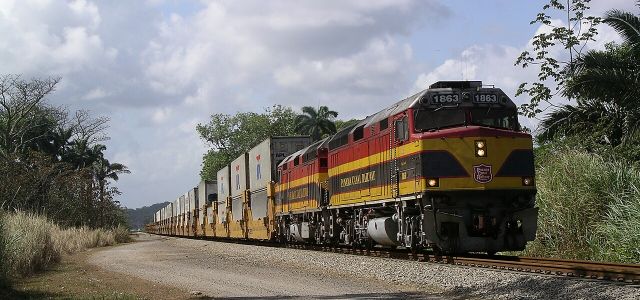
Photo: Nils Öberg
Maersk Lines has announced that it will be routing containers on its Oceania-to-the Americas “OC1” service around the backlogged, drought-stricken Panama Canal. The line will be transporting cargo via the “land bridge” across the isthmus by the Panama Canal Railway instead.
The Denmark-based shipping and logistics giant said in a customer advisory that the decision was made to ensure cargo “continues to move with as few delays as possible.” The company has not indicated whether it will extend the land bridge concept to other service lines.
Sourcing Journal notes that the modified route creates two separate “loops” on each side of the canal—one in the Atlantic Ocean and another in the Pacific Ocean.
Pacific vessels will turn at Balboa, Panama, to drop off cargo heading for Latin America and North America and pick up shipments on course for Australia and New Zealand. Atlantic ships will turn at Manzanillo, Panama, to offload the freight destined for Australia and New Zealand and collect goods on track for the Americas.
A record drought associated with the naturally occurring El Nino climate pattern has resulted in one of the country’s driest years in over 70 years. In July, the Panama Canal Authority (ACP) reduced the average daily transit capacity in the canal to 32 vessels per day from 38. From mid-January, the canal authority will allow 24 transit slots per day in its Panamax and Neopanamax locks.
The ACP’s restrictions are based on the current and projected levels of the rainfall-fed, artificial Lake Gatun, which provides the water to move ships through the Panama Canal’s lock system. Water levels at the lake were 81.6 feet Thursday, still down more than five feet from the five-year January average of 86.9 feet.
The Panama Railway opened in 1855, preceding the Panama Canal by half a century. The railway was vital in assisting the construction of the canal in the early 1900s. With the opening of the canal, the railroad’s route was changed as a result of the creation of Gatun Lake, which flooded part of the original route. Following World War II, the railroad’s importance declined and much of it fell into a state of neglect until 1998, when a project to rebuild the railroad to haul intermodal traffic began. The new railroad opened in 2001.

Intermodal freight trains are very efficient too!